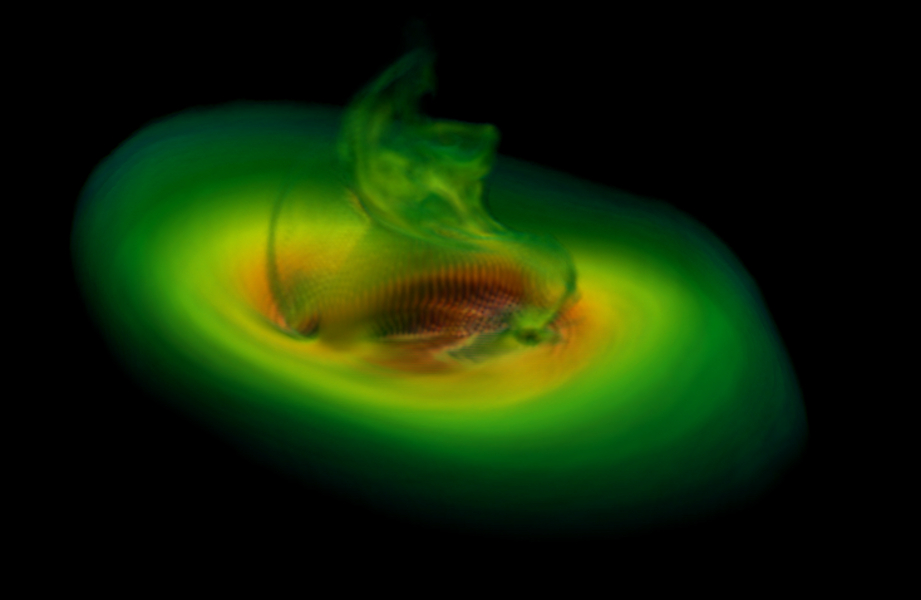
 Credit: NASA's Goddard Space Flight Center; P. Cowperthwaite, University of Maryland
Credit: NASA's Goddard Space Flight Center; P. Cowperthwaite, University of Maryland
When Holes Collide
Few binary systems consisting of black holes in orbit around each other are known. Such systems may in fact be common, but no one knows their true number, because they are so hard to detect. A good way to find them is by detecting the gravitational radiation they emit. Gravity waves are ripples in the space-time continuum produced by accelerating masses, and were predicted by Einstein. Emission of gravitational radiation robs energy from the binary, causing the orbit to shrink, and the orbital period to decrease. In turn, these changes produce more gravitational radiation, leading to the runaway emission of gravity waves and the eventual merger of the black hole companions. There are gravity-wave "telescopes" like the Laser Interferometer Gravitational-Wave Observatory (LIGO) and NASA's proposed space-based Laser Interferometer Space Antenna (LISA) but a clear signature of gravity waves emitted by merging black holes remains elusive. But it's also crucial to be able to detect black hole binary mergers with X-ray and optical telescopes, to identify the location of the merger. But what (if anything) would such emission look like? To find out, physicists have tried to model the mergers of black holes using computers. The image above is a computer simulation of the merger of two black holes and their accretion disks, simulating the types of electromagnetic radiation and physical changes expected from such a black hole merger. The physical conditions are determined by a complex blend of Einstein's equations of General Relativity and Maxwell's equations of electromagnetism, coupled with the complex fluid interactions of hot material swirling into the black holes. Because of this complexity, these models require extremely fast and powerful supercomputers, like the Pleiades supercomputer housed at NASA's Ames Research Center. The simulations show many interesting features, like the development of a funnel shaped structure in the turbulent flow surrounding the black hole merger, perhaps a precursor of a particle beam of the type emitted from many supermassive black holes. The simulations also show a bright flash of emission that is some 10,000 times brighter than similar emission produced by earlier, simpler computer models. Perhaps these mergers end with a bang, not a whimper.
Published: October 15, 2012
<
HEA Dictionary ● Archive
● Search HEAPOW
● Other Languages
● HEAPOW on Facebook
● Download all Images
● Education ● HEAD
>

Each week the HEASARC
brings you new, exciting and beautiful images from X-ray and Gamma ray
astronomy. Check back each week and be sure to check out the HEAPOW archive!
Page Author: Dr. Michael F. Corcoran
Last modified Monday, 26-Feb-2024 17:20:26 EST


